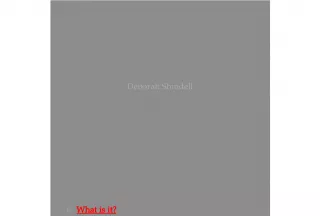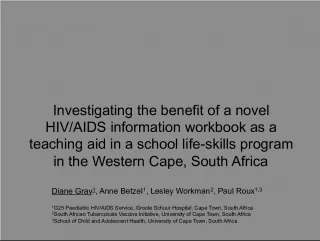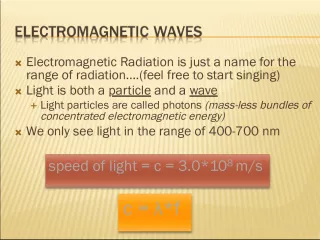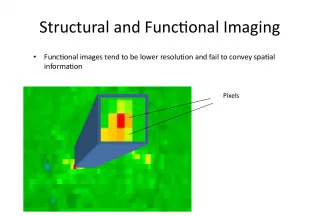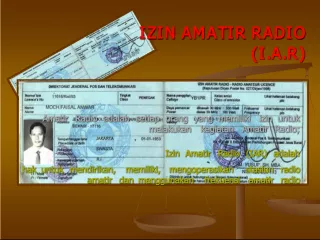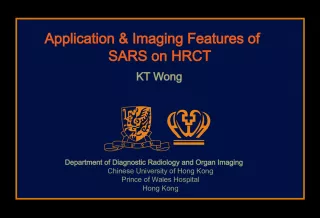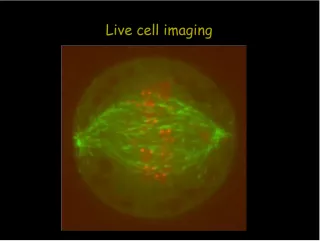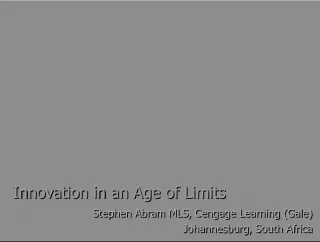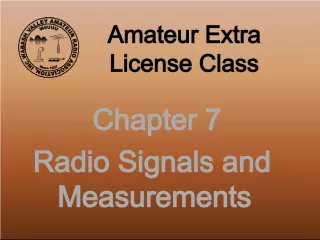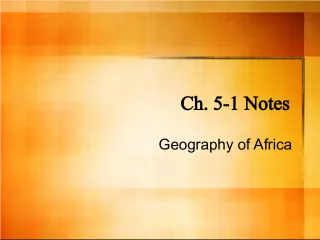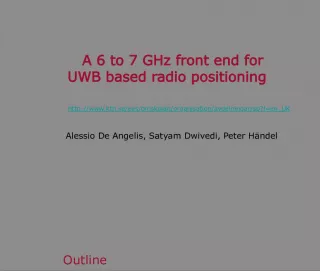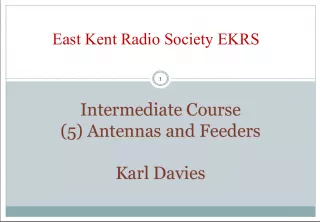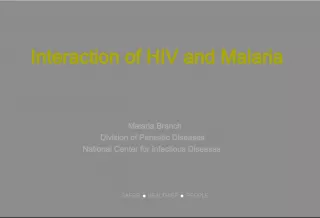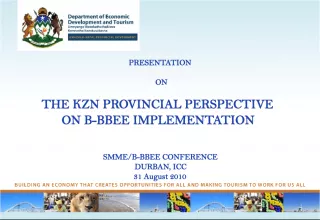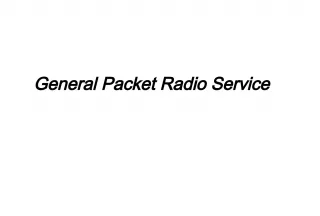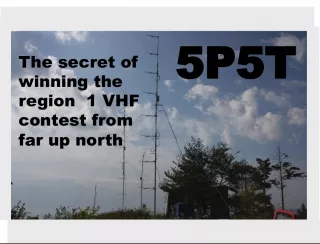VLBI Imaging of Supernovae and Gamma Ray Bursts from Hartebeesthoek Radio Observatory, South Africa
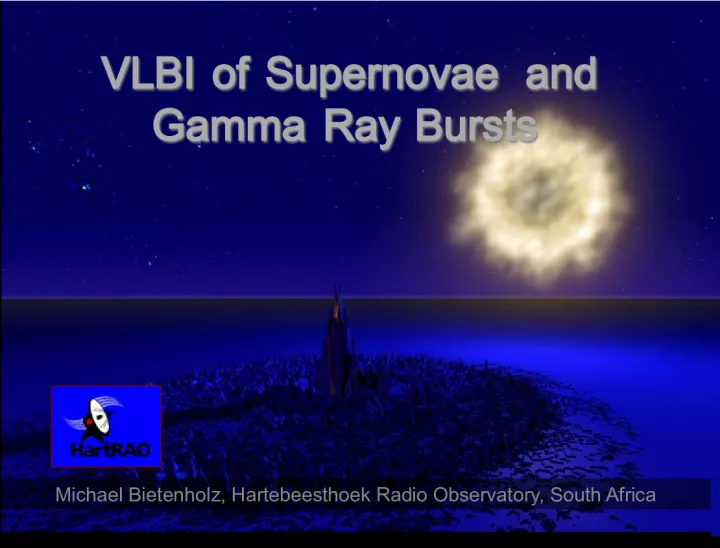

Dr. Michael Gaylard and Michael Bietenholz discuss the importance of using VLBI to image the explosive outflows, determine ejecta speed, and study the evolution of SN shells and supernova rates.
- Uploaded on | 1 Views
-
 zacharygill
zacharygill
About VLBI Imaging of Supernovae and Gamma Ray Bursts from Hartebeesthoek Radio Observatory, South Africa
PowerPoint presentation about 'VLBI Imaging of Supernovae and Gamma Ray Bursts from Hartebeesthoek Radio Observatory, South Africa'. This presentation describes the topic on Dr. Michael Gaylard and Michael Bietenholz discuss the importance of using VLBI to image the explosive outflows, determine ejecta speed, and study the evolution of SN shells and supernova rates.. The key topics included in this slideshow are VLBI, Supernovae, Gamma Ray Bursts, Ejecta, Radio Emission,. Download this presentation absolutely free.
Presentation Transcript
1. 1 Michael Bietenholz, Hartebeesthoek Radio Observatory, South Africa VLBI of Supernovae and Gamma Ray Bursts VLBI of Supernovae and Gamma Ray Bursts
2. 2 Dr. Michael Gaylard
3. 3 Resolution: we can resolve the explosive outflows. Normal supernova: 20000 km/s = 0.4 mas/yr at 10 Mpc, relativistic supernova or GRB, c = 0.6 mas/yr at 100 Mpc Determine ejecta speed Nature and geometry of the ejecta jets? Clumpiness? Bipolar ejections? Radio emission is usually due to the interaction of the ejecta with the surrounding material: from interaction we can learn about both ejecta and the surrounding material Evolution of SN shells, shock acceleration, eventual merging with ISM Compact remnant of a core-collapse SN? Supernova rates, especially in dusty environments Direct distances with the expanding shock front method out to Virgo cluster Introduction: Why Image Supernovae and GRBs with VLBI?
4. 4 Supernovae: Radio Detection of SNe Optical: several hundred SNe are detected each year Radio: Only core collapse (Type II, Type I b/c) detected to date (limits in Ia next talk). Only a few SNe detected each year in radio; total radio detections to date ~60 Even fewer have been resolved by radio observations - so every VLBI observation is of great value
5. 5 RSNe Detected with VLBI Name Type Host galaxy Distance (Mpc) Peak ( mJy at 8 GHz) References SN 1978K II NGC 1313 4 >100? Smith et al 2007. SN 1979C II M100 16 6 Bartel & Bietenholz, Marcaide et al SN 1980K II NGC6946 6 2 Bartel 1985 SN 1986J II NGC891 10 100 Bietenholz et al 2004 SN 1987A II LMC 0.05 80 Jauncey, Ng, Manchester SN 1993J II M81 4 100 Bietenholz, Bartel, Marcaide SN 1994I Ic M51 8 20 Bietenholz & Bartel, unpublished SN 1996cr II Circinus 3.6 ~100 Bauer et al, Bartel et al in prep SN 2001em Ib/c NGC 7112 80 4 Bietenholz, Paragi, Schinzel SN 2001gd II NGC 5033 13 4 P rez-Torres et al 2008 SN 2003gk Ib NGC 7460 45 2 Bietenholz et al 2013 SN 2003L Ib/c NGC 3506 92 3 Soderberg et al 2005 SN 2004et II NGC 6946 6 2 Mart -Vidal et al SN 2007gr Ib/c NGC 1058 10 <~ 1 Paragi et al 2007 SN 2007uy Ib NGC 2770 27 1 van der Horst 2011 SN 2008D BL Ib/c NGC 2770 27 3 Soderberg, Bietenholz Paragi SN 2008iz II? M82 3.6 150 Brunthaler et al 2010 SN 2009bb BL Ib/c NGC 3278 40 18 Bietenholz et al 2010 SN 2011dh IIb M51 8.4 7 Bietenholz et al, Mart -Vidal et al Approximately 30 RSNe with flux densities > 1 mJy have been detected in radio, and >100 have upper limits.
6. 6 RSNe Detected with VLBI Name Type Host galaxy Distance (Mpc) Peak ( mJy at 8 GHz) References SN 1978K II NGC 1313 4 >100? Smith et al 2007. SN 1979C II M100 16 6 Bartel & Bietenholz, Marcaide et al SN 1980K II NGC6946 6 2 Bartel 1985 SN 1986J II NGC891 10 100 Bietenholz et al 2004 SN 1987A II LMC 0.05 80 Jauncey, Ng, Manchester SN 1993J II M81 4 100 Bietenholz, Bartel, Marcaide SN 1994I Ic M51 8 20 Bietenholz & Bartel, unpublished SN 1996cr II Circinus 3.6 ~100 Bauer et al, Bartel et al in prep SN 2001em Ib/c NGC 7112 80 4 Bietenholz, Paragi, Schinzel SN 2001gd II NGC 5033 13 4 P rez-Torres et al 2008 SN 2003gk Ib NGC 7460 45 2 Bietenholz et al 2013 SN 2003L Ib/c NGC 3506 92 3 Soderberg et al 2005 SN 2004et II NGC 6946 6 2 Mart -Vidal et al SN 2007gr Ib/c NGC 1058 10 <~ 1 Paragi et al 2007 SN 2007uy Ib NGC 2770 27 1 van der Horst 2011 SN 2008D BL Ib/c NGC 2770 27 3 Soderberg, Bietenholz Paragi SN 2008iz II? M82 3.6 150 Brunthaler et al 2010 SN 2009bb BL Ib/c NGC 3278 40 18 Bietenholz et al 2010 SN 2011dh IIb M51 8.4 7 Bietenholz et al, Mart -Vidal et al Approximately 30 RSNe with flux densities > 1 mJy have been detected in radio, and >100 have upper limits.
7. 7 Radio Lightcurves (SN 1993J) Typical pattern seen in SNe with frequency- dependent rise and then a power-law decay after the supernova has become optically thin Increase in the steepness of the decay at t 2500 days (Bartel et al 2002)
8. 8 VLBI Movie of SN 1993J Global Array VLBI at 8.4 GHz, then 5 GHz and 1.6 GHz for last epochs 35 Epochs of VLBI
9. 9 Deceleration Radius scaled by t 0.8 to show deviations from powerlaw expansion Bietenholz et al 2010
10. 10 1.7 GHz 6 Mar 2010, day 6187 ~ 16 years after the explosion Explosion Center Jy/beam Global array: 18 antennas (EVN + VLBA + GBT). Used in-beam calibrator technique Image background rms: 3.7 Jy/beam Radius: 5.1 10 17 cm ( 34,000 AU; 0.16 pc) Expanding at ~7,500 km/sec Limit on a PWN at centre? 50 Jy at 1.6 GHz = 25% of Crab Nebula Bietenholz et al 2003: 50 Jy at 8.4 GHz (stacked 3 epochs,1998-2000) Marti-Vidal & Marcaide 2014: 102 Jy at 5.0 GHz (stacked images) Bietenholz et al, in prep
11. 11 Central Component in SN1986J Central component turned on at age ~15 yr 0.8 milli-arcsec ( 10 17 cm) 200 the current radio luminosity of the Crab Nebula at 15 GHz Bietenholz, Bartel & Rupen 2004 Multi-frequency VLBI Image: Contours, red: 5 GHz Blue white: 15 GHz
12. 12 Central Component in SN1986J Bietenholz, Bartel & Rupen 2004 Multi-frequency VLBI Image: Contours, red: 5 GHz Blue white: 15 GHz Youngest Neutron Star or Black Hole?
13. 13 SN 1987A Comparison of VLBI image to optical and X-ray images. Contours: VLBI at 1.7 GHz, 0.5, 1.5, 3, and 5 mJy/beam. Ng et al 2011
14. 14 SN 1987A Comparison of VLBI image to optical and X-ray images. Contours: VLBI at 1.7 GHz, 0.5, 1.5, 3, and 5 mJy/beam. Ng et al 2011
15. 15 ULIRGs: Supernova Factories Arp 220 (Conway et al), Arp 299 (Bondi, Neff, Ulvestad et al.), IRAS 23365+3604 (Romero-Caizales, P rez-Torres et al.) High Sensitivity Array observations at 14 and Global VLBI at 8.4 GHz 17 sources detected, mostly resolved at 14 GHz VLBI crucial to distinguishing starburst and AGN Conway et al 2010
16. 16 Relativistic Expansion: SNe and GRBs Image: Saxton Long Duration GRBs associated with Type Ibc supernovae Collapse of massive star into a black hole powers highly relativistic jet GRBs are jets oriented near the line of sight The jets not near the line of sight may be visible in radio
17. 17 Relativistic Expansion: SNe and GRBs Image: Saxton Long Duration GRBs associated with Type Ibc supernovae Collapse of massive star into a black hole powers highly relativistic jet GRBs are jets oriented near the line of sight The jets not near the line of sight may be visible in radio
18. 18 SN 2009bb VLBI observations Peak brightness 613 Jy/bm, rms = 128 Jy/bm, VLBA, VLA, Hobart, Tidbinbilla 2009 Jun 12 (age = 85 days) 40 Mpc Upper limit on angular size = 0.64 mas = 1.74 c S N 20 09 bb Bietenholz et al 2010
19. 19 Limits on Off-Axis Jets Off-axis jets could be detectable in the radio However, lower efficiency in par- ticle acceleration or lower magnetic field could dras- tically lower model curves Luminosity limits: Bietenholz et al 2014 , and Soderberg et al 2006 (S2006) Bietenholz et al 2014 SN 2003gk
20. 20 SN 2003gk VLBI Observations 8.4 GHz VLBA + Ef + Arecibo Age=~7.5 yrs (2011 Apr 11) Contours: 20, 30, 50 , 70, 90% of peak of 86 Jy/ beam r = 1 light-year Bietenholz et al 2014
21. 21 Limits on Off-Axis Jets Off-axis jets could be detectable in the radio However, lower efficiency in par- ticle acceleration or lower magnetic field could dras- tically lower model curves Luminosity limits: Bietenholz et al 2014 , and Soderberg et al 2006 (S2006) Bietenholz et al 2014
22. 22 VLBI Expansion Measurements: by Taylor et al. & Pihlstrom et al. show clear deceleration, with transition to non-relativistic regime at t ~ 1yr Relativistic Expansion: GRB 030329 (SN 2003dh) 22 Apr 2003 Size ~1 pc = 3 light years Taylor et al, 2004, 2005; Pihlstrom et al. 2007, Mesler et al 2012
23. 23 VLBI Expansion Measurements: by Taylor et al. & Pihlstrom et al. show clear deceleration, with transition to non-relativistic regime at t ~ 1yr Relativistic Expansion: GRB 030329 (SN 2003dh) 22 Apr 2003 Size ~1 pc = 3 light years Speed of light Taylor et al, 2004, 2005; Pihlstrom et al. 2007, Mesler et al 2012
24. 24 The Future of Supernova VLBI More sensitivity follow supernova for longer Resolve older, more distant supernovae: Cas A is 1 Jy and 6 mas at 170 Mpc - fill in the gap between supernovae and supernova remnants Supernova rates star formation rates Pop III Hypernova GRBs and orphan afterglows
25. 25 VLBI Supernova Gallery SN 1987A SN 1993J SN 1996cr SN 2008iz M82 SN 2011dh SN 1996cr, 1993J, SN1986J, SN1979C: Bietenholz, Bartel et al; SN 2008iz Brunthaler et al 2010; M82 supernova/SNR: McDonald, Beswick, Argo et al SN 1979C SN 1986J
26. 26
27. 27 Comparison of RSNe & SNRs McDonald et al., 2001
